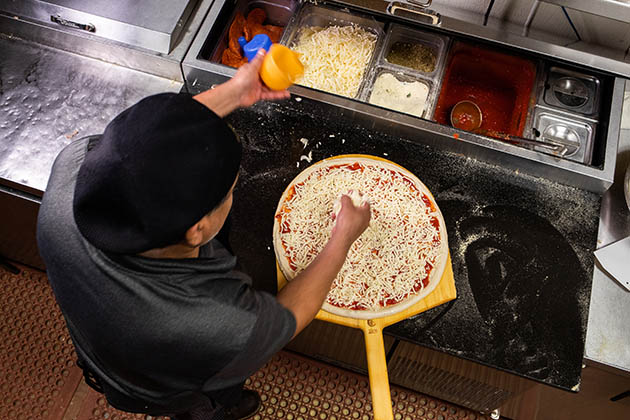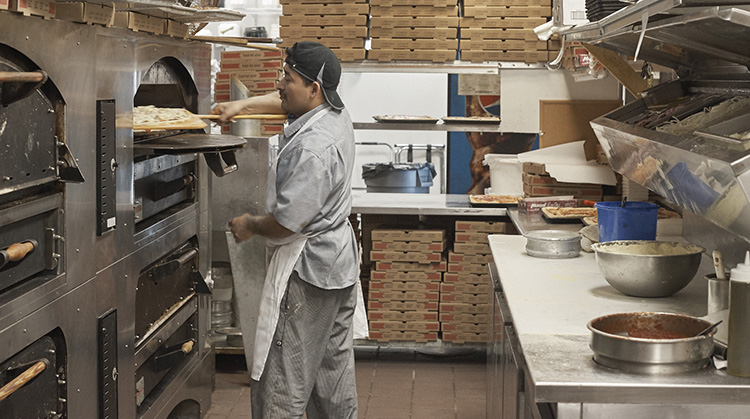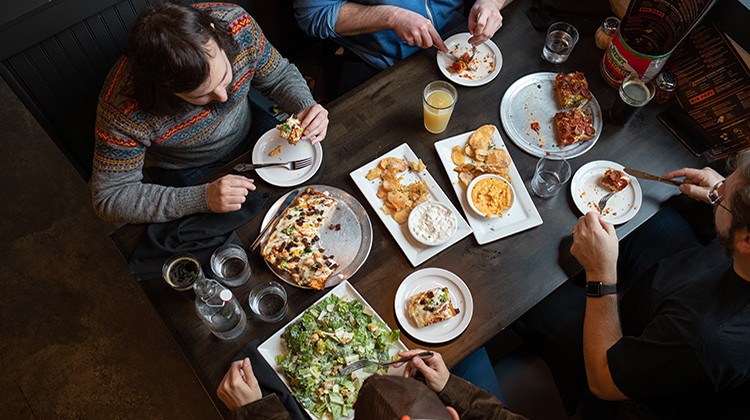The dairy industry is complicated. Farmers harvest milk daily and sell it to manufacturers. The perishable milk must be used within two weeks or processed into other dairy products that have a longer shelf life such as yogurt, cheese, or non-fat dry milk. Because cows produce milk every day, farmers cannot quickly ramp up or decrease the amount of milk available to sell.
If there is an overabundance of milk in the supply chain, cheese is the perfect way to store the excess milk. Some cheese manufacturers* make excess milk into commodity cheese, either 40 pound blocks or 500 pound barrels of cheddar. If the manufacturer doesn’t have a buyer, they offer to sell the truckload at the Chicago Mercantile Exchange (CME). Conversely, if a buyer needs cheddar, they bid to buy a truckload on the CME. Every weekday, this commodity marketplace is open for buyers and sellers to trade.
When inventory is tight, buyers bid up the price. When there is more cheese available than needed, the price falls. This trading price, which is available for the public to view on cheesereporter.com, can be set by just a few truckloads of cheese and is a key factor in calculating the price of millions of pounds of cheese sold each week.
Changes in supply can be driven by many factors, including:
- Seasonality: Generally, cheese inventories build in the first half of the year and decrease in the latter half of the year.
- Weather: Cows don’t like to be hot. A few weeks of hot and humid weather can reduce milk production by around 10% or more, reducing the amount of milk and cheese available.
- Dairy Economics: Dairy cows eat about 65 pounds of corn and silage daily. If feed prices are high dairy farmers may sell cows to manage profitability, reducing the supply of milk available.
- Dairy farmers regularly evaluate input costs such as feed, to optimize their margins. At times, this can impact supply by altering the overall output per cow and/or the components (protein, butterfat) within the milk.
- Global Milk Production: Fourteen to seventeen percent of all US milk production is exported each year, and that percentage continues to grow. The dairy economies of the world can impact the US dairy markets and our pricing.
Changes in demand can be driven by domestic and global conditions:
- Domestic: A 1% swing in consumer demand can toggle America’s cheese needs by more than 100 million pounds. When cheese inventories are high, the US government can get involved. The USDA has programs to buy cheese to distribute through food banks. For example, the Coronavirus Food Assistance Program (CFAP) included a stimulus package to purchase $317 million in dairy products.
- Global: The European Union is the largest milk producer in the global market, producing 1.6 times more than the US. When global inventories are low, especially in the European Union, there will be increased demand to buy dairy products from the US which can create shortages in the domestic cheddar market and drive up prices.
Although fluctuating prices can be alarming for pizza operators, there are several strategies that operators can use to combat the unpredictability.
- Know your food costs: Operators should have a target food cost percent. In most cases, operators who start tracking their food costs usually see a decrease of 2-3% in the first couple of months. What gets measured, gets managed. Learn strategies to understand and manage your food costs in our Maximizing Menu Profits guide, available to Grande 100-Percenters.
- Portion your cheese: Most operators weigh their doughballs to the ounce, but they don’t measure their cheese which costs 10 times as much. Cheese is the most expensive part of the pizza, and portioning cheese goes a long way in controlling your costs and building a more consistent pizza. Click here to learn more about portion control and tools that we have available to help!
- Set your menu prices according to average costs: The only thing we know for sure about the cheese market is that it will change; there will be times when the market is higher than average, and times when the market is lower than average. Set your prices based on the long-term average, and slowly increase your menu prices over time according to your pricing strategy. To view the market trends, click here.
- Have a pricing strategy: It’s best to regularly review and update your menu pricing according to your strategy, rather than taking menu pricing jumps when costs are high. Grande’s Solutions @ Work Team can help you create a strategy and keep you on your plan.
*Grande makes only the finest Italian cheeses. Grande does not make or sell cheddar cheese for the CME commodity market.










